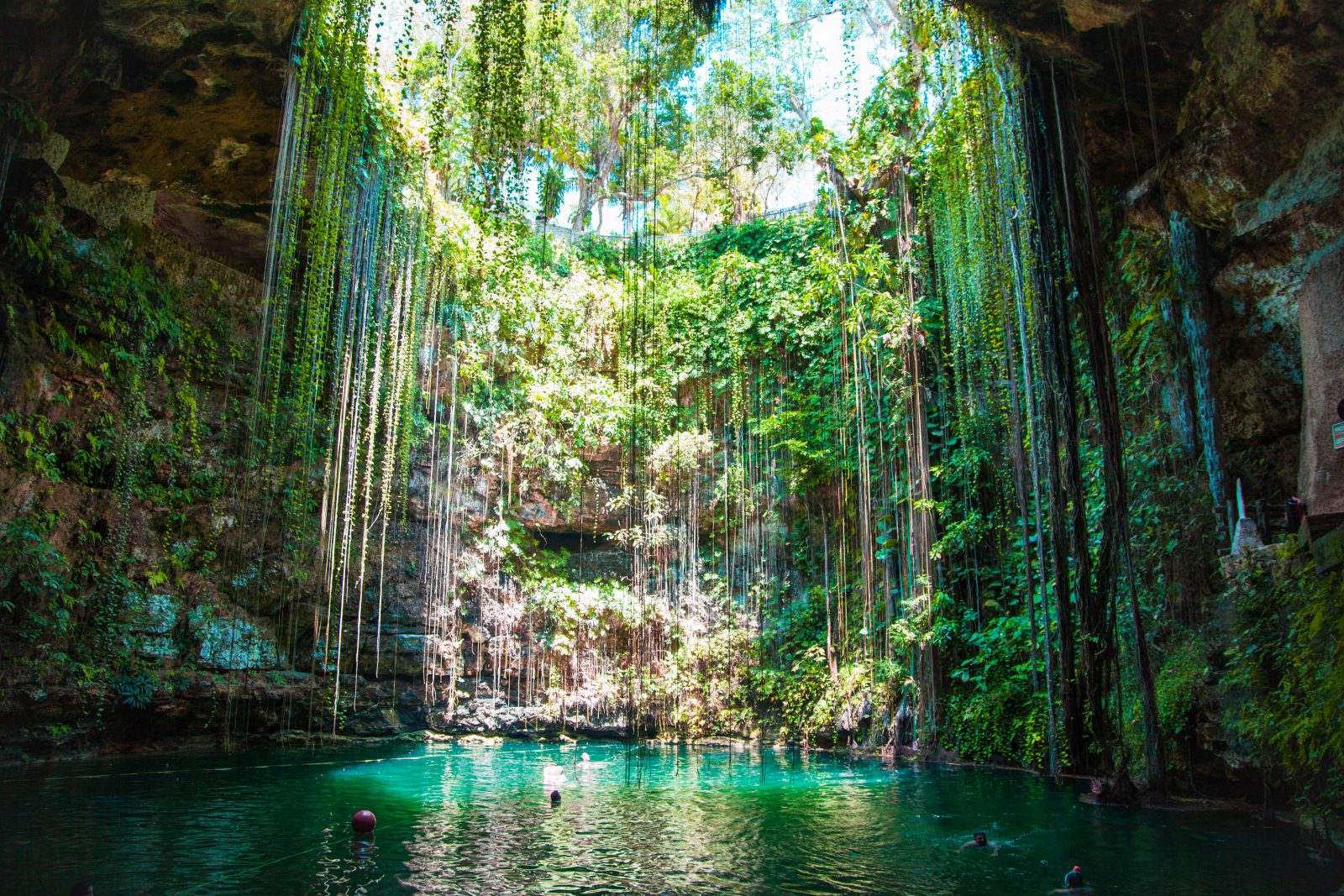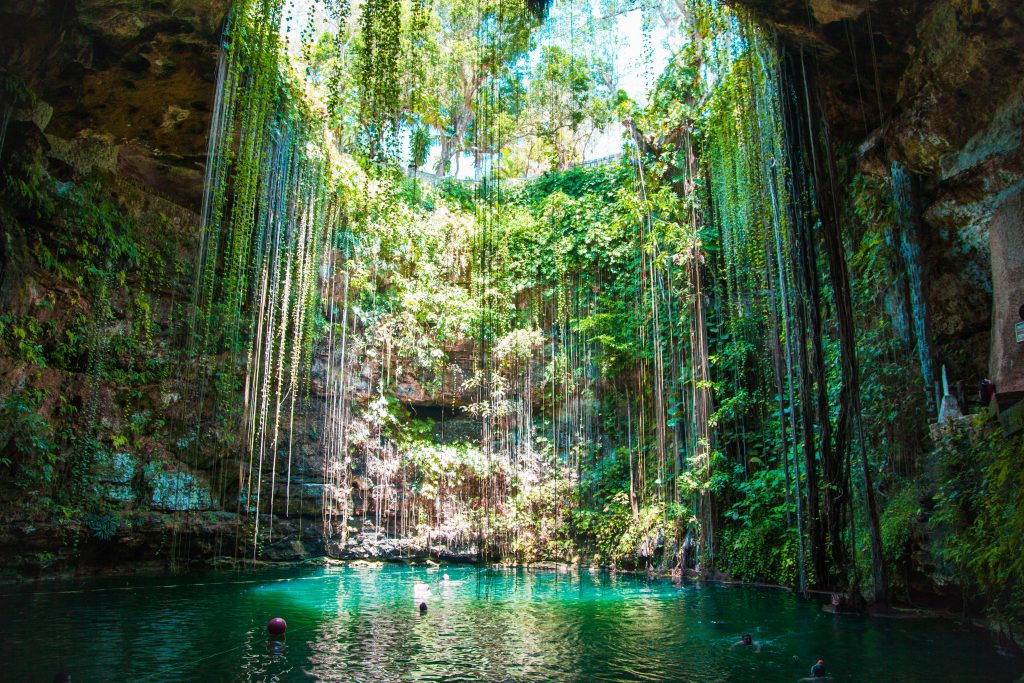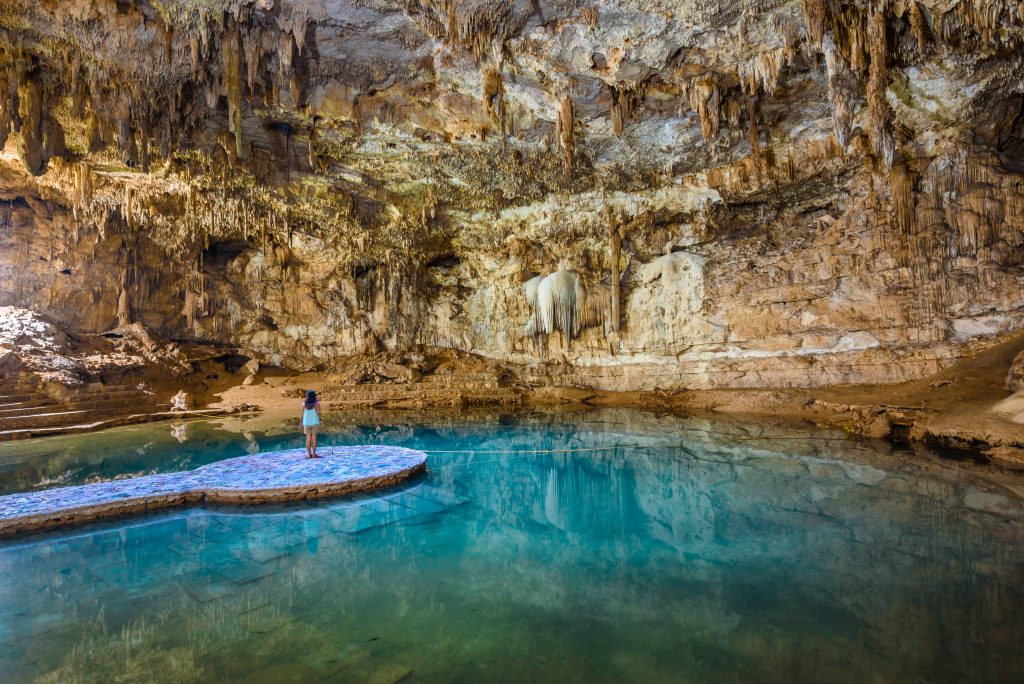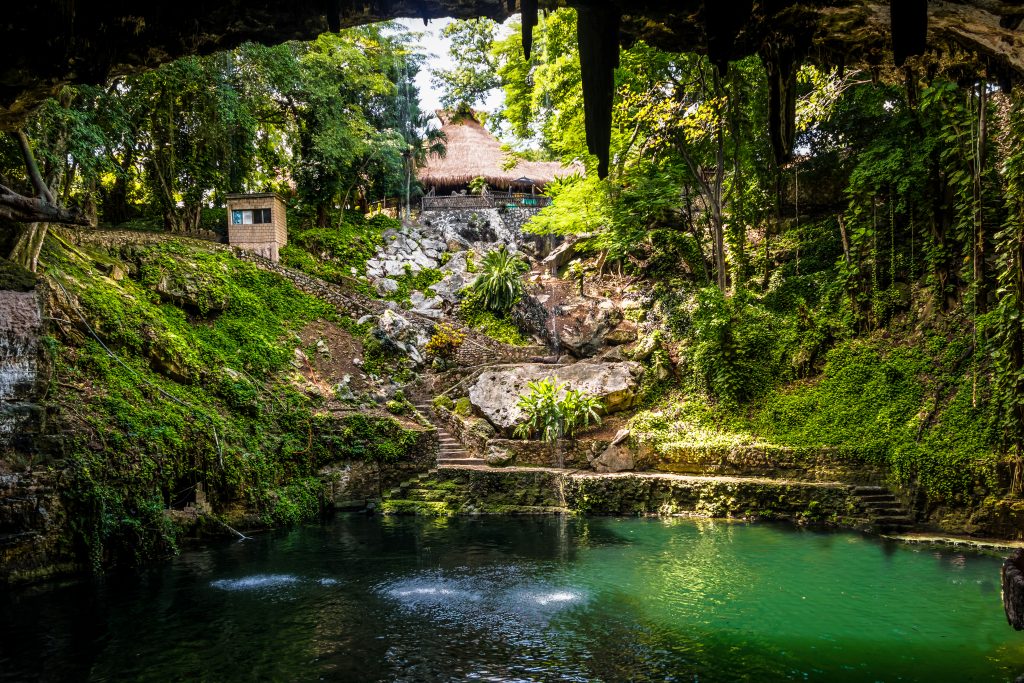The Ancient Beauty of Cenotes


To the ancient civilizations of the Yucatan Peninsula, bodies of water known as cenotes were both essential in daily life and worshiped as the watery portals to the netherworld. Today, these remarkable natural bodies of sub-surface water remain objects of enchantment, and great places to take a dip.
By Eric Herman
Mexico’s Yucatan Peninsula is home to some of the most ancient, mysterious and beautiful natural watershapes found anywhere in the world. Known as “cenotes” (pronounced seh-no-tayz) these often-hidden natural wonders consist of underground chambers permanently containing water that have been exposed to the surface where the ground has collapsed.
The word is a Spanish derivation of the Yucatec Maya terms “D’zonot” or “Ts’onot”, which simply mean “well”. Although commonly associated with the Yucatan and neighboring central American countries of Belize and Guatemala, where they exist in the thousands, cenotes can be found all over the world.
The Yucatan is particularly well-suited for cenote formation. The region’s geology and hydrology are largely characterized by limestone bedrock and heavy seasonal rainfall. Because limestone is extremely soluble, it slowly dissolves when exposed to percolating water for long periods of time. This is why large cave systems are commonly found in areas dominated by limestone.
The porous bedrock does not allow for fresh water to accumulate above ground in forms of rivers and lakes. Instead rain water percolates into the limestone and eventually collects underground, where it continues to erode the rock.
Eventually, the surrounding bedrock destabilizes and collapses, exposing the cave that has formed just below the ground, a voila, a cenote.
Naturally there are numerous factors that influence cenote formation, which is why they exist in a variety of shapes and sizes. Some cenotes are deep water-filled shafts with imposing walls, while others are wide and shallow. Some are semi-open with part of the water surface hidden from view. Entirely cavernous cenotes are another type and can be reached only via spelunking or even cave-diving through tunnels. Many cenotes represent adventure, and even danger, and yet many others are sites of important scientific research.
Cenotes are exposed portions of vast cave networks, most of which are still unexplored. The Grand Cenote near Tulum, for example, gives access to the Sistema Sac Actun, the second longest cave system in the world, stretching more than 300 kilometers.
Recent exploration and study have linked cenotes to the extinction of the dinosaurs. Aerial mapping has confirmed that a dense ring of cenotes outlines the rim of the massive impact crater that formed 66 million years ago when an “extinction event” meteor struck the earth and ended the rein of the dinosaur, right at the boundary between Cretaceous and Paleogene ages.
Such profound cenote history is betrayed by the sheer enjoyment and beauty they provide today. Many are popular swimming spots that have been blandished with steps, docks and other manmade structures. They are often festooned with hanging vines and lush greenery, and many contain cave-dwelling fish.
Some cenotes are part of popular recreation and resort properties featuring modern amenities including restrooms, cabins and restaurants.
Fascination with cenotes is nothing new. For millennia dating back to pre-history, the peoples of the Yucatan understood the critical importance of cenotes and made wide use of them as both a water resource and for ceremonial purposes. Although tropical and thickly forested, the region is largely devoid of rivers and lakes, leaving the cenotes as the primary year-round source of fresh water. Not surprising, the biggest Mayan cities, including Chichen Itza and Uxmal, were built near networks of cenotes.
In some locations, cenotes became one of world’s first public utilities. The city of Mayapan, located 100 kilometers west of Chichen Itza, had more than 40 cenotes distributed within its city walls, conveniently providing fresh water for nearly 20,000 people.
Cenotes were so integral to life in Mesoamerica, they were considered sacred. Rituals and ceremonies at sacred cenotes, especially those beseeching the gods for rain and crops, were commonplace.
Many cenotes have tremendously clear water, courtesy of being filtered through limestone and in some cleansed by the presence of plant roots from the tropical forests above them. The cool water temperatures and welcoming waters often provide relief from the steamy surface temperatures.
Archaeologists exploring the massive cenote have recovered artifacts made of precious metals, jade, and pottery, as well as the remains of human sacrifice. To this day, descendants of the ancient Maya pay their respects to the mythical inhabitants of cenotes, sans the bloodshed.
Today, cenotes serve as one of the primary tourist attractions and most important historic sites in the region.
Opening image by Tiago Fialho | Shutterstock, lower image by Simon Dannhauer Shutterstock












